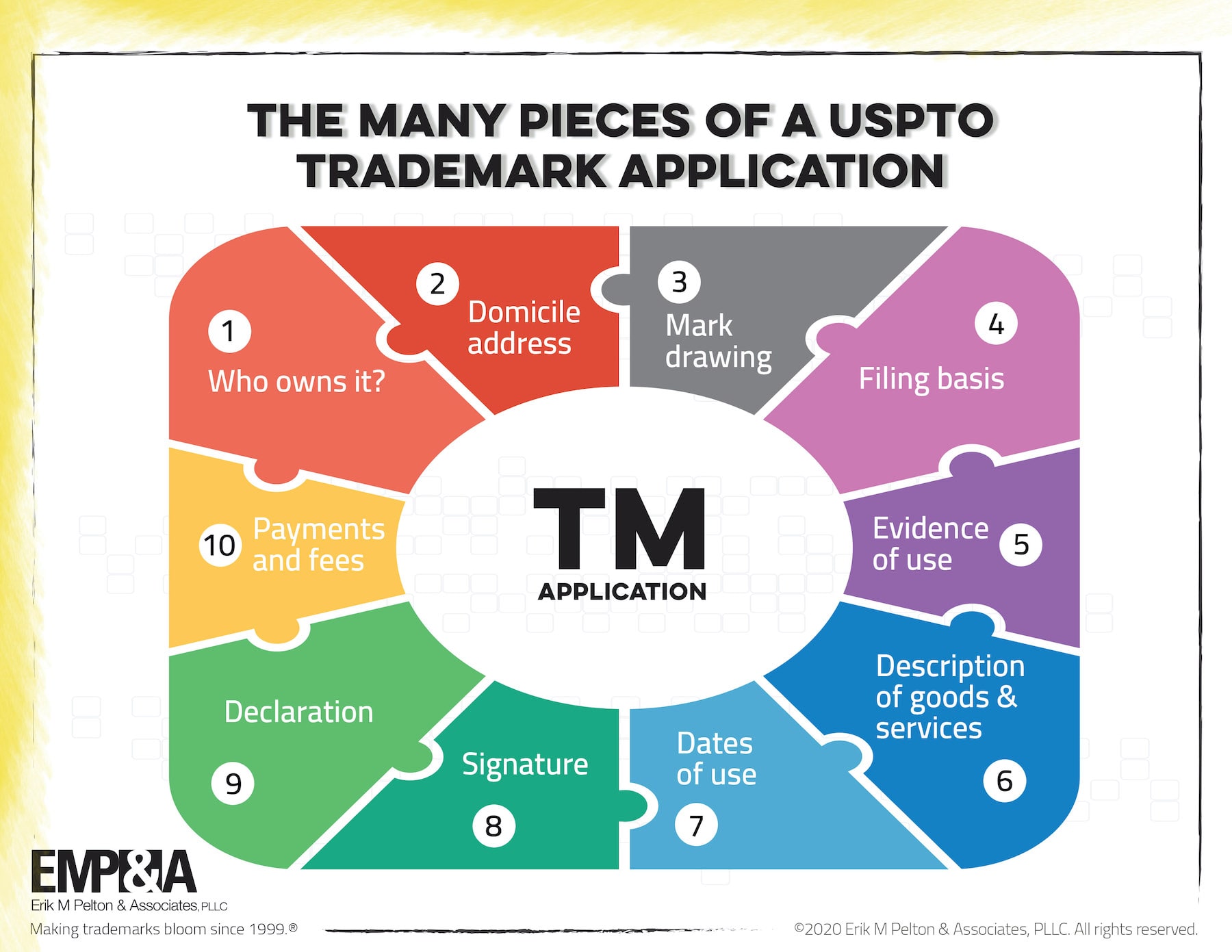The following is an excerpt from my video, The Many Pieces of a USPTO Trademark Application.
Have you ever looked at the USPTO Trademark Application Form online? It’s called the TEAS Form, – TEAS Standard or TEAS Plus. TEAS is the electronic filing system at the USPTO. There are many steps to the form. On the one hand, one could try to argue—they wouldn’t convince me—that it’s an easy form to apply for a trademark registration, because it’s just putting in a bunch of data into a form that you click ‘Submit’ on.
To me, that’s like saying it’s easy to fill out your federal taxes. Yeah, it’s literally boxes and numbers and math that goes into it, and you can file your taxes. But to truly understand what goes where, and what types of deductions or benefits go in what places, it’s much more nuanced behind the scenes on your tax forms. And also in the trademark forms, there are a lot of nuanced and important decisions that have to be made. So I want to just discuss briefly the key parts of the trademark application.
The first thing, when you go to apply, is you have to list who owns it. Well, that’s oftentimes a black-and-white simple question, but oftentimes it’s not. What if there’s a business partnership? What if you’re a sole proprietor but you own an LLC or a corporation, but you own it individually? Do you own it as a person, the trademark application? Or do you want the business to own it? This question can be quite important and it needs to be right.

The address: One would think that that’s maybe the simplest part of the application. But in 2020 and beyond, that is actually more complicated now, too. The U.S. Patent Trademark Office won’t accept certain types of addresses. They won’t accept PO boxes. They won’t accept other types of mail stops or care of addresses in general, without filing a special petition. You have to know what types of addresses are acceptable, and make sure that the proper information is provided.
The drawing of the trademark itself: Whether it’s standard character or logo or color or black and white, is a very important element of the application. I’ve written and spoken about that separately, because it’s so important.
The basis of the application, whether it’s based on use in commerce, or intent to use, or a foreign filing, or something else, is also a very significant element of the application filing. In the filing of the form itself, again, it’s like a checkbox and just some relatively straightforward information… if you know the right information and have made the proper decision. But making that proper decision can be complicated.
The evidence of use: Again, “Oh, I need evidence that shows the trademark being used” sounds simple on its face, but it is more complicated behind the scenes to know what types of evidence are acceptable. How do you submit it or upload it or provide it to the USPTO? Is it for a product or for a service? There’s some nuance there. So the evidence is an important, but not always straightforward, element of the application.
Describing the goods and services: Again, I’ve spoken and written about this separately at length as well, because the description of the goods and services is very important to getting strong, proper protection for your trademark. There are strategies about describing it as broadly as possible, as long as it’s accurate; sometimes describing it narrowly; also which categories or classes are chosen. It’s easy to type in a description, but to type in the right description can be very challenging, especially if there’s potential obstacles that you need to navigate around in terms of possible conflicts.
Dates of use are another important element of an application.
The correspondence address: not always the same as the owner’s address. Is there an attorney? Is there someone on their correspondence? Again, another element.
The declaration: knowing what the declaration states, the veracity of the things, and a proper signature on the declaration, and a proper signature on the application. These are all little elements that are not extremely complicated. But they’re important, and there can be complications.
And it’s important to know, “Do those complications apply in my situation?” Because that’s what you need to know. If the complications don’t apply, great. But whether or not they apply is very valuable and important to know. And of course, if the complications do apply, then you need to know how to deal with them.
Finally, the payment of the fees is an important part of the USPTO application process. The USPTO has its own payment system. It’s got its own quotes. You have to log in and have an account now to use any of these forms.
I hope I’ve expressed here that there are a lot of complex items in the trademark application that look straightforward. “Oh, I check a box. I fill in some text in here.” But they have big ramifications for your chances of success, and for the strength and value of your trademark registration. So it is important to make sure that you get them right.
If you want to read more about the trademark application process, you know I’ve got free blog posts, free videos on erikpelton.tv, free podcasts at erikpelton.live. and I’ve written a book called Building a Bold Brand. You can find it on Amazon or at buildingaboldbrand.com.




